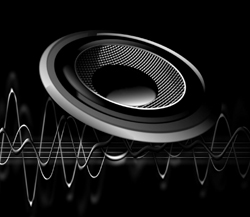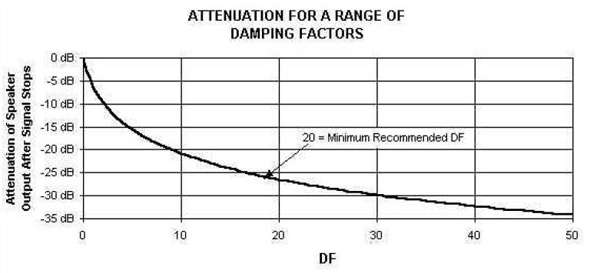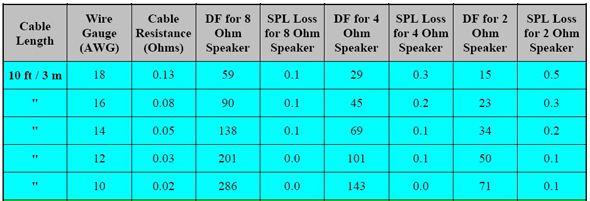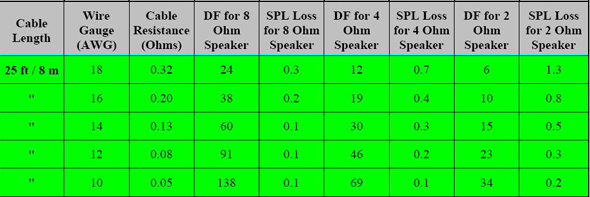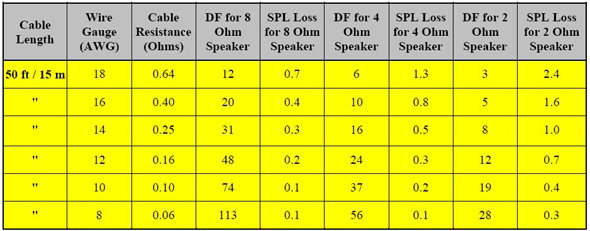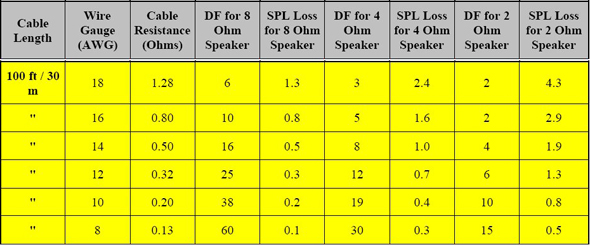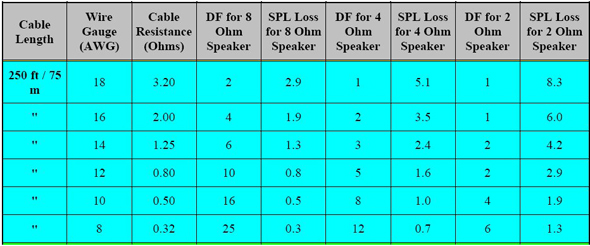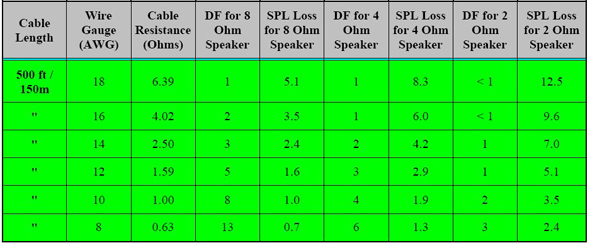What Damping Does:
The main effect of damping in a loudspeaker is to reduce the SPL produced by the loudspeaker’s diaphragm moving because of its own inertia after the signal stops.
The frequency of the sound it produces with this movement will be at the resonant frequency of the moving system. A common term for this is “overhang,” and in severe cases, this can translate into “one note bass.”
Types Of Loudspeaker Damping:
There are two types of loudspeaker damping: mechanical and electrical. The loudspeaker’s suspension and the air load on the diaphragm determines the amount of mechanical damping.
This cannot be determined except by sophisticated measurements. Electrical damping is determined by the resistance load on the loudspeaker, which is the sum of the loudspeaker cable resistance and the amplifier output impedance.
This can be determined by a simple calculation. Electrical damping or Damping Factor (DF) is calculated by dividing the loudspeaker’s voice coil DC resistance by the sum of the loudspeaker cable resistance and amplifier output impedance.
Attentuating “Overhang:”
The amount of attenuation that electrical damping provides is:
DF10 = -20 dB, DF20 = -26 dB, DF50 = -33 dB
This is added to the loudspeakers mechanical damping. Because of this addition, an electrical damping factor of 20 or more is considered adequate for live sound reinforcement systems. With an electrical DF of 20 or more, the SPL produced by the loudspeaker moving on its own inertia will be essentially inaudible. The following chart shows the effect of electrical damping on the attenuation of the sound generated by the loudspeaker after the signal stops.
Driver Variations:
The larger the driver the more import electrical damping is. Low frequency drivers and subwoofers have the most problems regarding damping. Their moving mass is quite high and their suspensions are comparatively weak compared to this mass.
Because of this they have relatively poor mechanical damping and therefore electrical damping is important. High frequency drivers have much lighter mass and stiff suspensions compared to that mass. As a result, electrical damping is relatively unimportant.
Wire Table:
The table below shows the damping for various wire lengths and gauges for 8, 4 and 2 ohm loudspeakers. It also shows the SPL loss for the audio signals from the power loses because of the cable resistance. It can be readily seen that the SPL loss is far less important than damping factor in choosing a loudspeaker cable.
For example on a 4 ohm loudspeaker with 100 length of #14 cable will only reduce the SPL by a minimal 1 dB, but the damping factor is less than 1/2 of what is considered adequate.
Note: The calculations for the table are based on loudspeaker nominal impedances rather than DC resistances. Therefore the values listed in the table for DF and the SPL losses are quite useful but are only approximate values.
Amplifier DF:
A power amplifier with a rated damping factor of 1000 at 8 ohms was used for the calculations in the table below. The internal impedance of such an amplifier is 0.008 ohms. Even using an amplifier with a rated damping factor of 100 ohms, the DF numbers change surprising little.
The reason is the output impedance of such an amplifier is 0.08 ohms, which is still small compared to the cable resistance in most cases. The SPL loss is unaffected by an amplifier’s output impedance.
Calculations:
If you wish to “plug in” some numbers other than those shown, here are the calculations used to make the table:
Total Cable Resistance = (2 x Cable Length x Wire Resistance per 1000 Feet) / 1000
SPL Loss = 20 x LOG (Speaker DC Resistance / (Loudspeaker DC Resistance + Total Cable Resistance)
Damping Factor (DF) = Speaker DC Resistance / (Amplifier Output Impedance + Total Cable Resistance)
Looking At The Table:
For short cable lengths the damping factor of the amplifier will have some affect on the numbers, especially for 2 ohm loudspeakers. For cable lengths over 50 feet the cable resistance, rather than the amplifier’s specified DF, will determine the electrical damping factor.
For runs over 50 feet (15 m) at 2 ohms, 100 feet (30 m) at 4 ohms, and 200 feet (60 m) at 8 ohms it is not practical to maintain a damping factor of 20 and still use a practical wire gauges.

